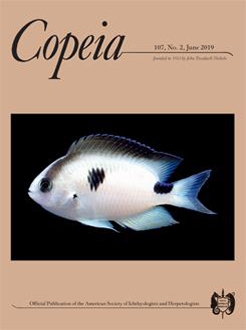Gymnotiform electric fishes exhibit many forms of sexual dimorphism, including sexual size dimorphism (SSD), aspects of head, jaw, and electric organ morphology, and electric signal waveform. However, sexual dimorphism is poorly documented in banded electric fishes (Gymnotus), where most species are monomorphic in external appearance and electric signal waveforms. Gathering comparative data on species of Gymnotus has historically been hampered by their predatory and territorial lifestyles, in that they are usually dispersed in their preferred habitats and often collected individually. Here data are presented from a population of G. javari from the Peruvian Amazon, examined for SSD (n = 55) and electric organ discharge (EOD) amplitude (n = 162). These results are compared with a syntopic population of G. carapo (n = 61), and also with G. omarorum (n = 24) from a population in Uruguay. Unlike most congeners, G. javari exhibits pronounced sexual dimorphism in total length and body weight, and EOD pulse amplitude is correlated with total length. A review of several ecological hypotheses on body-size distributions of each sex as a balance of multiple competing selection pressures finds none of these hypotheses adequately explain SSD in G. javari. Examining SSD in biogeographic and phylogenetic contexts leads to the conclusion that selection across different environments (e.g., local habitats, geographic regions) and through evolutionary time may have contributed to the evolution of SSD in some but not all lineages of Gymnotus.
BioOne.org will be down briefly for maintenance on 17 December 2024 between 18:00-22:00 Pacific Time US. We apologize for any inconvenience.
How to translate text using browser tools
23 May 2019
Sexual Size Dimorphism in the Macana Tigrina, Gymnotus javari (Gymnotidae, Gymnotiformes)
Aaron H. Fronk,
Lesley Y. Kim,
Jack M. Craig,
William G. R. Crampton,
James S. Albert
ACCESS THE FULL ARTICLE





